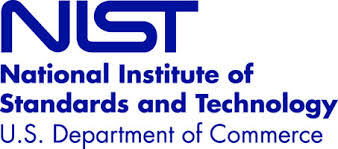 Mainstays of biomedical research, permanent lines of cloned cells are used to study the biology of health and disease and to test prospective medical therapies. Yet, all too often, these apparent pillars of bioscience and biotechnology crumble because they are crafted from faulty starting materials: misidentified or cross-contaminated cell lines. Writing in the June 2016 issue of PLOS Biology, scientists from the National Institute of Standards and Technology (NIST) call for "community action" to assemble a "comprehensive toolkit for assuring the quality of cell lines," employed at the start of every study.
Mainstays of biomedical research, permanent lines of cloned cells are used to study the biology of health and disease and to test prospective medical therapies. Yet, all too often, these apparent pillars of bioscience and biotechnology crumble because they are crafted from faulty starting materials: misidentified or cross-contaminated cell lines. Writing in the June 2016 issue of PLOS Biology, scientists from the National Institute of Standards and Technology (NIST) call for "community action" to assemble a "comprehensive toolkit for assuring the quality of cell lines," employed at the start of every study.
PLoS Biology
See the following -
DIY Lab Technique to Revolutionise Training for Neuroscientists
 A team of international researchers have come up with an inexpensive way to self-manufacture lab equipment, which could revolutionise the way neuroscientists across the world are trained. In a study published in the open access journal PLOS Biology, Dr Tom Baden from Sussex Neuroscience and André Maia Chagas, from the University of Tübingen, have devised a new imaging and microscope system called “FlyPi”. The equipment needed for modern neuroscience experiments can cost tens or even hundreds of thousands of pounds, which often means only institutions in rich countries can undertake top-level research and scientific training...
A team of international researchers have come up with an inexpensive way to self-manufacture lab equipment, which could revolutionise the way neuroscientists across the world are trained. In a study published in the open access journal PLOS Biology, Dr Tom Baden from Sussex Neuroscience and André Maia Chagas, from the University of Tübingen, have devised a new imaging and microscope system called “FlyPi”. The equipment needed for modern neuroscience experiments can cost tens or even hundreds of thousands of pounds, which often means only institutions in rich countries can undertake top-level research and scientific training...
- Login to post comments
Four PLOS authors receive 2016 Breakthrough Prize in Life Sciences
 Through the Breakthrough Prize – initiated and funded in 2012 by Bay Area biotechnology innovators, social media venture capitalists and successful internet entrepreneurs – outstanding scientists working in the fields of life sciences, fundamental physics and mathematics receive recognition, money and a bit of glamour. This year, four of the five scientists awarded a $3 million Breakthrough Prize in Life Sciences chose to publish some of their work in Open Access journals over the course of their careers. In so doing, Edward S. Boyden, Karl Deisseroth, John Hardy and Svante Pääbo ensure their research is available for distribution, discovery and reuse, introducing opportunities for all scientists to build on their discoveries...
Through the Breakthrough Prize – initiated and funded in 2012 by Bay Area biotechnology innovators, social media venture capitalists and successful internet entrepreneurs – outstanding scientists working in the fields of life sciences, fundamental physics and mathematics receive recognition, money and a bit of glamour. This year, four of the five scientists awarded a $3 million Breakthrough Prize in Life Sciences chose to publish some of their work in Open Access journals over the course of their careers. In so doing, Edward S. Boyden, Karl Deisseroth, John Hardy and Svante Pääbo ensure their research is available for distribution, discovery and reuse, introducing opportunities for all scientists to build on their discoveries...
- Login to post comments
NIST Issues Call For Developing -- And Using -- Consensus Standards To Ensure The Quality Of Cell Lines
- Login to post comments
Reusing, Revising, Remixing And Redistributing Research
The initial purpose of Open Access is to enable researchers to make use of information already known to science as part of the published literature. One way to do that systematically is to publish scientific works under open licenses, in particular the Creative Commons Attribution License that is compatible with the stipulations of the Budapest Open Access Initiative and used by many Open Access journals. Read More »
- Login to post comments